Specialist products are cleaning up as house-proud consumers entertain at home more often and adopt a make-do-and-mend mentality. Rachel Barnes reports
It’s official: we’re a nation of scrubbers. Okay, scrubbers is a strong word we’re not putting the sort of elbow grease into cleaning our homes we once did (we don’t need to with all the high performance cleaning aids out there) but thanks to the fact we’re staying in more to save money, we’re more house-proud than ever.
And we’re prepared to shell out to keep up with the Joneses, it seems. “People are keeping on top of the housework rather than the traditional annual or biannual deep clean,” says Unilever category leader for household cleaning Ian Toft. “So they’re happy to spend a bit more money to make a difficult task easier and are investing in specialist products.”
In a big way. Over the past year, sales of drain cleaners have risen 10% to £27.1m, oven cleaners have leapt 26% to £9.5m, window cleaners 27% to £11.5m and limescale removers a whopping 32% to £20.5m [Kantar Worldpanel, 52w/e 29 November]. Their growth has had a significant impact on overall household cleaner category sales, which are up 9% by value (to £326.7m) and 7% by volume.
Specialist products have been bolstered by consumers electing to do bigger cleaning jobs such as cleaning windows or unblocking drains themselves rather than paying someone to do it, say the experts.
But the whole category has benefited from the recession-inspired make-do-and-mend mentality, believes David Wainwright, Sainsbury’s household care buyer. “People are treating their homes, including carpets and white goods, better in order for them to last longer,” he says. “People don’t want to have to replace things right now just as they’re tightening their belts.”
Andy Leydon, head of marketing at own-label supplier McBride, which acquired £5m brand OvenPride before Christmas, certainly believes there is scope for rapid growth for products such as oven cleaner.
“I see no reason why we can’t double the penetration of OvenPride to about 20% within 12 to 15 months,” he says. “Consumers are very loyal when they try it, so there’s certainly a big growth opportunity there.”
Surface cleaners are also poised for further growth, especially, says Eco brand Method, those that boast additional environmental credentials.
Method introduced Steel For Real and Daily Granite two years ago and the latter has become its biggest seller, with sales rising 10% in the past year. “Consumers value their homes and want to look after their premium surfaces with premium products in order to keep them in perfect condition,” says Louise Roper, Method international marketing director.
“As the trend is now for ‘jiffy’ cleaning, it means people want to have a product they can leave out in the kitchen or bathroom and looks stylish. Products such as our French lavender or pink grapefruit cleaners are even being requested for style shoots for interior and women’s magazines.”
House-proud
Image has played a key role in the category’s growth in the past year. Many sectors have benefited from people home entertaining as they cut back on eating out.
The household aisle is no exception. “It has an instant knock-on effect on products like washing-up liquid, as people are therefore washing up more,” says McBride’s Leydon. “People are house-proud, so with that also comes an increase in toilet care and home fragrances, both of which say a lot about you and your home.”
The Come Dine With Me phenomenon and the ‘dine-in’ supermarket deals have sparked a dinner party renaissance. Coupled with that is a desire to impress guests with a fresh, clean home, says Jeyes marketing director Jayne Hazlewood. Sales of Jeyes’ in-cistern Bloo range were up 20% last year, according to the company.
“The image-conscious consumer will choose products to reflect their style and that applies even to non-glamorous products like toilet cleaners,” Hazlewood says. “We deliberately colour co-ordinated our new limited edition Zingy Lime and Tangerine Twist variants across Bloo liquid rims and toilet cleaners, so that people can leave their matching products on show in the bathroom.”
Jeyes plans to launch limited edition Bloo colours and fragrances every six months. “We expect this to help maintain appeal in what is traditionally a low-interest segment of the category,” she says.
Outdoor fragrance could also be an untapped market. New company Binifresh has launched hygiene and air freshener products for wheelie bins to appeal to people whose rubbish collections have gone fortnightly, or who live in areas where the bin men are regularly on strike.
Manufacturers are also increasingly using fragrances to create an ambience in the home. Aircare products have become a major new sub-category over the past few years. P&G’s Febreze launched a premium range last month, under the new Destinations brand, supported by TV, print and online ads, as well as in-store activity.The Thai Orchid, Caribbean Paradise and Egyptian Mystique variants are inspired by authentic aromas from around the globe.
“We know that consumers are looking for new experiences and variety when it comes to aircare,” says P&G trade communications manager Paul Lettice. “We wanted to create a range with the ability to transport them to rare and exotic places.”
P&G is looking to move away from strong smells associated with chemical cleaning, with the relaunch of Flash to now include Febreze fragrances [see box, above].
Sara Lee launched a National Geographic-branded range for Ambi Pur last year, across single-perfume plugs, 3volution and candles. This spring, Alaska Glacier Bay, inspired by “oceanic glaciers and the crisp arctic breezes, with light floral notes from the surrounding forest” is joining the initial two lines, Japan Tatami and Nevada Desert Flower, along with a new reed diffuser format.
Sara Lee believes a £1.5m ad campaign in March will help it significantly grow its first year annualised sales of £4.6m and attract a younger and more affluent shopper to the plug-in category.
The biggest brand in aircare, Reckitt Beckiser’s Air Wick, is also innovating at the premium end. Its new Touch of Luxury range, introduced this January, was launched with the aim of creating a “more indulgent sensation” in the home. Fragrances include Smooth Satin & Moon Lily; Wild Jasmine & Pearl; Midnight Blackberry & Vanilla Silk.
It is also now rolling out a second premium range, AquaMist, which features more natural scents, including Cool Linen & White Lilac; Freesia & Jasmine; and Wild Lavender & Mountain Air.
The smell of success in laundry
Scent is big business in laundry too. While gels and concentrated liquids are leading the way with new formats [see box, opposite], new fragrances are leading to more brand extension NPD.
Unilever’s Surf and Comfort brands have been increasing their focus on fragrance over the past five years, culminating in the launch of Twilight Sensations last year. “We recognised that fragrance was the way the laundry market was moving and Twilight Sensations moved it to the next level the glamour fragrance trend,” says laundry category manager James Griffin.
With goth-style packaging and fragrances such as Jasmine & Black Gardenia and Vanilla & Black Orchid, the range promotes Surf and Comfort to a younger market and is less family-focused than stablemate Persil.
Now, Unilever is pushing “super fragrances” through the Comfort brand with its new Exhilarations range, aimed at “fragrance junkies” [see box p51].
“Exhilarations is a premium product, but we’re only talking about 20% to 25% above the core range and still sub-£3,” says Griffin. “Despite the recession, we are very confident about this launch because of the growth we’ve seen in premium lines in the category. The success of Twilight Sensations has shown us that while people may not be going on holiday or replacing their clothes as regularly, they do want a bit of everyday pampering from their laundry.”
P&G is also looking at fragrance, but with more of a focus on technology. It rolled out a new formulation for Lenor last year which contains ‘perfume micro capsules’. Deposited on the clothes during the wash, the capsules later burst when the clothes are touched, releasing a fresh waft of scent.
However, P&G’s most significant laundry activity since Ariel Excel Gel in 2008 has been the relaunch of the Ariel portfolio with Actilift in January this year. The new technology removes stains in the wash, but also helps prevent them from setting in the first place by smoothing the clothes’ fibres even when used in a cool wash.
Stain removal has been a significant growth area in the past year, partly because people are trying to take better care of their clothes rather than replace them, but also because cooler washes sometimes need a performance boost.
“With the move to gels, people are often moving to lower temperatures now as low as 15 degrees,” says McBride’s Leydon. “That’s fine for white-collar workers who are looking to freshen up their clothes rather than deep clean them. But if you’re a mum with young kids, you’ll probably need to boost the cleaning performance now and then and that’s where these stain removers come in.”
Reckitt Benckiser also seized on this market with the launch of its own premium gel range of laundry additives under the Vanish brand last year. The idea was that Vanish Gel would appeal to those consumers who have switched into the format already for their laundry detergent.
Germ kill
Reckitt Benckiser has now moved the concept on further, combining stain removal with antibacterial properties. Vanish Extra Hygiene, launched this month in powder and liquid formats, offers the added benefit of 99.9% germ kill.
The germ message has been strong for Reckitt Benckiser in the past year, with über-serious voiceover ads extolling the anti-bacterial capabilities of its biggest brand, Dettol. “Dettol stood out in the category this year as swine-flu fever took hold,” says Sainsbury’s Wainwright. “Sales of all anti-bac products increased substantially, with Dettol the main winner.”
Growth was driven by the fact that swine flu paranoia in the UK was far greater than in other countries, adds Leydon. “Own-label, particularly Tesco’s, was good at capitalising on the fear factor. But Dettol’s advertising had own-label in its targets, making comparisons between its trigger spray and others on the market.”
The high-profile ad campaign for Dettol’s Flu Prevention Range, on air from last October, also tapped into the fear factor as Britain entered the cold and flu season. Reckitt insists its message was not focused on swine flu paranoia.
“Dettol has a hugely trusted position in consumers’ minds and the brand has not wanted to be seen to concentrate on one specific virus, but rather a general message about the spread of germs in the home,” says Phil Thomas, marketing director of RB UK’s household and personal care division. “The summer was a busy one for cleaning products, including anti-bac cleansers, and Dettol’s popularity is based on its effectiveness as a cleaner as well as its 99.9% germ kill properties.”
Multi-purpose
Although specialist products have had a bumper year, their success didn’t come at the expense of multi-purpose cleaners.
“We’ve seen high numbers in specialist products, such as 19% growth in carpet cleaners,” says Unilever’s Toft. “But that growth was off a lower base. Multi-purpose has actually delivered greater sales.”
General household cleaners grew slower than the overall market, with volume and value sales up 7% to £233.7m. However, that growth represented £16.4m of the £29.3m in additional sales within the category.
Although Dettol made significant gains, up 15.6% to £47.5m, other brands did not fare so well [Nielsen, 52w/e 3 October].
Sales of Unilever’s Domestos slipped 5.1% to £34.2m, but sister brand Cif had a mixed year. Its overall sales were up 5.2% to £47.7m and Cif Actifizz, aimed at a younger market, enjoyed double digit growth, but sales of both its Power Cream bathroom and kitchen sprays fell.
Unilever says it is backing both brands with extensive marketing support. For Cif, the current campaign is focused on its new Powercream Active Shield, a new technology that leaves a film on the surface that prevents dirt from sticking.
Performance has been Unilever’s key focus and the launch of new formulation Domestos 24HR was intended to show consumers that the brand had lasting effects. The thicker bleach claims to stays flush-proof for longer, with a £2.3m ad campaign encouraging people to use it daily to “protect from flying germs”.
According to Toft, the latest data from the last quarter shows the bleach market and Domestos back in growth, which he puts down to the strong marketing campaign, on TV and in-store.
Brands versus own-label
In-store promotions have been vital to the success of the category in the past year. Unilever says that promotions, particularly single-unit pricing rather than bogofs, have played a significant role in the past year.
Better-than-half-price deals have been common, says Sainsbury’s Wainwright. While Sainsbury’s Switch & Save own-label campaign succeeded in highlighting quality comparisons with leading brands, particularly within dishwash, washing-up liquid and bleach, the big brands fought hard to maintain position, he says.
“As there has been so much promotional activity from the big brands, it has meant that very often the big brands have been cheaper so there has been less of a reason for customers to switch into own-label, “he elaborates. “People are shopping smarter, stocking up when big brands are on deal, but they are switching into own-label when the customer knows that there is no quality difference. Thanks to Switch & Save, we have had good own-label growth, even when the big branded promotions were running.”
Sainsbury’s is constantly reviewing its range and quality standards to make sure it matches leading brands, says Wainwright, adding that it successfully relaunched its dishwasher tablets and washing-up liquid range during 2009. “We want to be able to offer our customers an economical choice in all key segments, with no compromise on quality,” he says.
The improving quality of own-label had the brands worried at the beginning of the recession that consumers would see it as less of a trade-down.
“In the UK, more than other countries in Europe, private label is seen as a credible alternative to brands,” says McBride’s Leydon. “So, when the recession took hold, own-label was seen as much more of a threat to brands’ positions. We’ve seen much deeper promotions from brands in order to maintain their share and also because there is a concern that if people switch to private-label, then they might not switch back.
“A lot of the price differential has been eroded. In auto dishwashing, there has been a lot of discounting from Fairy and Finish. In trigger cleaners, Flash has been promoted heavily and air freshening brands such as Air Wick and Glade also had high levels. The industry has to start questioning how sustainable that level of promoting is.”
Georgia-Pacific’s Nouvelle toilet paper brand, for example, managed to maintain sales at £24m for the year to October. However, it increased its volume sold on deal from 49% in 2008 to 65% during the year to December [Nielsen].
At times, there was a real frenzy of promotions, admits Unilever’s Griffin. “Some companies, including us, moved very quickly at the beginning of the recession to get that first-mover advantage. Everyone was very aggressive in their promotions and we saw record levels of volume sold on deal. It’s fair to say that there was a risk of the category becoming overtraded. We did get to a point where it was almost unsustainable.”
Promotional levels have started to stabilise in the latest 12-week data, he adds. “There’s only so much recession talk people can take before the deal hunting stops.”
Deals have also benefited budget cleaning brand Astonish, which is distributed through retailers such as Wilkinson, Savers, Home Bargains and 99p Stores. According to the company, sales have increased 20% in the past year to £12m as its range of specialist and multi-purpose cleaners have won over budget shoppers still wanting to buy brands.
As well as NPD, including 4-in-1 Germ Killer and multi-use spray Grease Off!, the company also launched its first TV campaign in January this year. As a result, it says sales in the following few weeks soared by 500%. With a second campaign planned for September, it believes it will be on target to reach sales of £14m in 2010.
“Consumers are not trading down, they merely want to choose from a better range than some retailers offer, along with competitive pricing that does not lower quality or value for money,” says Astonish marketing manager Sarah Gould.
Consumer desire to shop the category on deal is unlikely to diminish in the year ahead, especially if supermarkets hold more themed events. Last year, Asda held Big Clean Events in January and September, promoting the category in its seasonal aisle. It ran three-week events offering deals on big brands such as 2-for-£1 on Fairy washing-up liquid and Domestos and £1 for products such as Dettol and Flash.
It is just coming to the end of its latest Big Clean Event, which finishes this weekend, and hopes the event will build on last year’s success, when sales grew ahead of its rivals at 11.3%, according to Asda. “Events are key as they not only benefit our existing customer base but also drive switching from our competition and bring new users into the category,” says Asda marketing manager Phil Wilkinson.
Tesco also says that its Spring Clean event in February and March 2009 delivered good growth, with Unilever’s Cif emerging as the lead brand. “The category has been very strong, helped particularly by an increase in frequency and depth of promotions across the market,” says Tesco household cleaning buyer Claire Lorains. “As with all elements of the category, we will always try to give the customer what they are looking for and offer the best value in the market.”
Unsurprisingly, Tesco has the biggest own-label offer in the category, but it also represents a significant over-index, accounting for 38.4% of the total own-label household cleaning segment.
According to Kantar Worldpanel data, the Tesco cleaning range is the fifth biggest in the market, sitting between Dettol and Cillit Bang and worth more than Asda’s, Sainsbury’s and Morrisons’ put together.
“Own label continues to be a key part of our range and customers who are loyal to own label have remained so,” adds Lorains. “For 2010 we will continue to develop the range, but we are still working out the detail of what this will look like.”
Overall, supermarket own label grew ahead of the 9% category growth, with sales up 13% to £63.5m in the cleaning category [Kantar Worldpanel, 52w/e 29 November]. But P&G believes that rather than sticking with own label, consumers who shopped around will end up coming back to brands.
“When some people see a product on deal they are tempted to trade down, but they are often blinded by a sense of false economy,” says Lettice. “While they may effectively be getting a cheaper product in the short run, they can encounter inferior performance and a need to consume greater amounts of the product they have purchased.”
Own-label specialist McBride disagrees. The company believes that now is the time for own label to build on momentum and further grow market share. “If people try it, they may be brought in to own label permanently,” says Leydon. “Our testing protocols have to be a match to the claims and performance offered by the brands, so that private label is considered a real alternative.”
Brand loyalty has diminished during the recession and consumers are now far happier to switch and shop on deal when buying essentials. “They’re taking a bit more time to look around the fixture because the deals out there are so prevalent,” says Leydon. “Fifty per cent of people now say they consider purchasing own-label. Over this next year we will need to up the ante to better communicate to consumers just how much own label has developed beyond a basic offer.”
Cleaning at a premium
And it’s not the basic tier that’s driving sales of own-label products. There has not been significant growth in cheaper own-label lines, as people interested in 12p washing-up liquid were already buying it, says Leydon.
About 80% of own label is standard-level products, but suppliers are focusing their NPD efforts increasingly at the premium end of the spectrum.
“Premiumisation has been working well for certain categories, such as fabric conditioners and air care, which aren’t true essentials,” says Leydon. “But some essentials are now starting to grow at the premium end. Within washing-up liquid, for example, we’re seeing more skin and nail care products, and lines containing Aloe Vera or different fragrances. We will see more growth in the premium side of own label in the next year.”
This would follow a trend already happening in brands. Manufacturers across the categories from facial tissues to auto dishwash believe premiumisation through fragrance-led and technology-led NPD will be the driving force behind the fixture over the next year and beyond.
“In the next year we will start to see health and beauty trends coming to the fore within household, from fragrance to age-prevention of clothes,” says Leydon.
Mintel suggests a number of ways that brands can tap into greater fragrance demands. One example it gives is a P&G product in the US under its Dawn brand that combines a washing-up liquid with an air freshener. It also suggests creating distinctive fragrances that can be shared across a whole range of cleaning products to boost the overall impact in the home.
Another intriguing proposal is to cross categories. “Perhaps brands such as After Eight could innovate with a small peppermint room spray in each box,” suggests Mintel analyst Alexandra Richmond.
The retro trend could even have a part to play as it has in other categories, such as confectionery. Already, P&G has announced it is bringing back a limited edition of its iconic white Fairy bottle to mark the 50th anniversary of the brand. A TV campaign this month aims to evoke memories of Fairy ads from the 1950s and 60s, reinforcing trust through nostalgia.
Manufacturers and retailers also forecast that environmental concerns will climb back up the consumer agenda, having become secondary during the recession [see box page 55].
The next 12 months will be interesting for the category as we see whether brands can build base sales without resorting to high levels of promotions and whether own label can build on the momentum of 2009. With the number of households estimated to grow by 1.1 million to 28 million by 2014 [Mintel], the brands that strike the right balance between promotions and innovative NPD will really clean up.
Focus On Household
Sign in to comment on this article
Not logged in before? Register for FREE guest access today.
You will be able to:
- Read more stories
- Receive daily newsletters
- Comment on stories
Advert



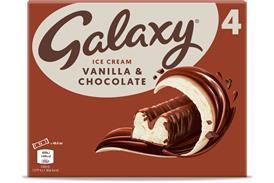



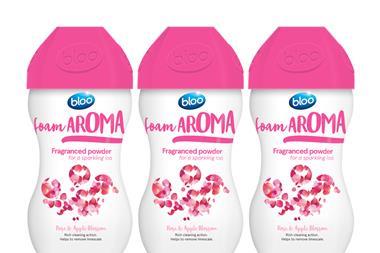


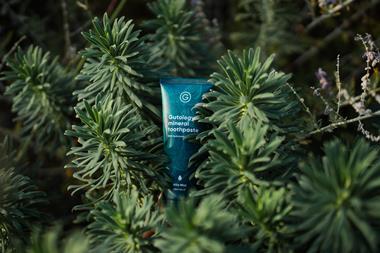
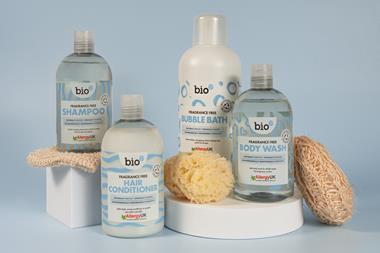
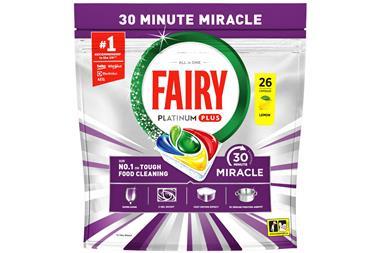



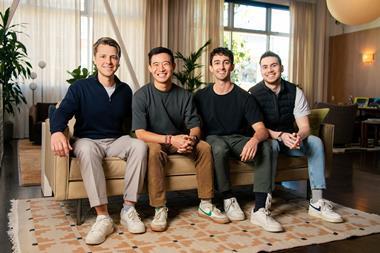


No comments yet